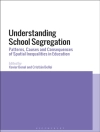‘This book is easy to read and understand. It is a great resource for individuals wishing to write grants. I have not seen another book that is this comprehensive and user-friendly.’ Score: 92, 4 Stars.– Michalene A. King , Ph D, RN, CNE in Doody’s Medical Reviews
This fully updated and revised edition of a classic guide to grant writing for health and human service professionals reflects the two major changes in the field: new NIH application processes and an increased emphasis on interprofessional and team approaches to science. New case examples reflect grant writing strategies for a great variety of health and human service professions, and the text includes an enhanced focus on online methods for organizing grant submissions. A new section on special considerations for submitting grants addresses specific types of research including mixed methods, behavioral intervention research, secondary analyses, translational research, and comparative effectiveness studies. The new chapter on common writing challenges and solutions provides examples of strong and weak statements and highlights the importance of writing with precision. Additionally, this new edition provides an expanded section on post-award requirements and links to NIH videos about grant writing.
Written for individuals in both academic and practice settings, the guide addresses, step-by-step, the fundamental principles for effectively securing funding. It is the only book to provide grant-writing information that encompasses many disciplines and to focus on building a research career with grant writing as a step-wise process. It provides detailed, time-tested strategies for building an investigative team, highlights the challenges of collaboration, and describes how to determine the expertise needed for a team and the roles of co-investigators. The book addresses the needs of both novice and more experienced researchers.
New to the Fourth Edition:
- Reflects recent changes to the field including an emphasis on interprofessional approaches to science and new NIH application processes
- Offers additional case examples relevant to social work, nursing, psychology, rehabilitation, and occupational, physical, and speech therapies
- Provides links to NIH websites containing videos on grant writing
- Includes chapter opener objectives
- Expands section on post-award requirements
- Focuses on electronic mechanisms for organizing grant submissions including software such as Ref Works and google alerts
- Enlarges appendices to include charts, graphics, grant application samples and Aims page samples full of errors with answers provided
Tabela de Conteúdo
‘
Preface xiii
Acknowledgments xvii
Introduction xix
Part I Getting Started
Chapter 1 Why Write a Grant?
Chapter 2 Becoming Familiar With Funding Sources
Chapter 3 Developing Your Ideas for Funding
Chapter 4 Infrastructure to Support Grant Writing
Part II The Writing Process
Chapter 5 Common Sections of Proposals
Chapter 6 Strategies for Effective Writing
Chapter 7 Common Pitfalls in Proposal Writing
Chapter 8 Writing Considerations for Specific Research Grants
Chapter 9 Concept Papers, Pilot Studies and Supporting Documentation
Part III Preparing a Budget
Chapter 10 Developing a Budget
Chapter 11. Putting It All Together to Create a Budget
Chapter 12. Technical Considerations in Budget Development
Part IV Models for Proposal Development
Chapter 13 Four Project Structures
Chapter 14 Understanding the Process of Collaboration
Chapter 15 Forming a Collaborative Team
Part V Submitting the Proposal
Chapter 16 Learning About Your Institution
Chapter 17 Electronic Considerations
Part VI Life After a Grant Submission
Chapter 18 Understanding the Review Process
Chapter 19 Responding to the Proposal Review
Chapter 20 A Case Study
Part VII Strategies for Managing a Grant Award
Chapter 21 Welcome to the World of Post-Award
Chapter 22 More Post-Award Considerations
Chapter 23 Budget Management
Appendix A Common Questions and Their Answers
Appendix B Selected Key Acronyms
Appendix C Selected Web Sites
Appendix D Sample Timeline, Budget Sheets, and Flow Charts
Appendix E Guidelines for Evaluating Collaborative Teams
References
‘Sobre o autor
Kevin J. Lyons, Ph D, has over 40 years of experience in higher education as a faculty member and administrator. Dr. Lyons is one of the founding members of the American Interprofessional Health Collaborative. He has also served on the Board of Trustees for Rocky Mountain University of the Health Professions.












